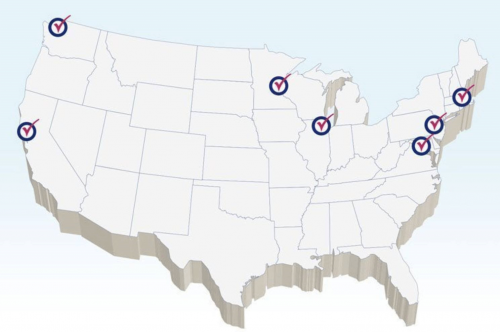This is a joint post from Reuben Saltzman, Charles Buell, and Barry Stone.
We’ve seen the exact same concerning article from Consumers’ Checkbook pop up in seven different areas of the country. These areas include the Twin Cities, San Francisco, Chicago, Boston, Puget Sound, Delaware Valley, and Washington, DC.
The basis of each article is that Consumers’ Checkbook rented a three-bedroom house, hired 12 home inspectors to inspect the home, and the inspectors did a poor job of inspecting to a standard that doesn’t exist. The inspections were labeled superficial and the inspectors were called lazy, sloppy, and ding-dongs. Each one of these articles gives the impression that the story takes place in that particular city.
Disingenuous
We have two problems with this article. First, the premise of the article is not candid. The location of the test house is not told, but it’s clearly implied that the test house was in the city that the story takes place in.
This didn’t ring true, so Reuben put in a call to Consumers’ Checkbook to ask about this. They claimed that there were indeed seven identical houses rented in seven cities. Reuben pressed for more details, asking how the results from every house could have been identical, and they got back to him a few days later with a different story. On the second round, they said that there was actually only one test house, located in the Washington, D.C. area.
The Star Tribune ran the same story on their website, first stating that the home was rented by “Undercover shoppers from Twin Cities Consumer’s Checkbook.” This was later changed to the current version that appears in the Star Tribune, which states that the house was located in the suburbs of Washington, DC.
No Standards
The article says that Checkbook’s research staff identified 28 “too obvious to miss” items. They also state the focus was to find “soon to be needed expensive repairs.” This included things like loose hinges to a vanity door, cut cords at window blinds, dirty filters at window AC units, trees and landscaping in need of care and trimming, and a doorbell that wasn’t working. These items are not included in home inspection Standards of Practice (SoP), and in our humble opinion, are not “soon to be needed expensive repairs”.
Would you ding a medical doctor for not checking your teeth for cavities?
We call this reporting below the belt. They made these inspectors look bad for not doing things that fall outside of home inspection Standards of Practice, and even home inspection standards of care. At least one excellent home inspector, preferably several, should have helped to determine what should and shouldn’t have been included as “too obvious to miss”. This would have helped to give legitimacy to the article.
The Good
While we’re extremely disappointed with this article, the main message is still a good one: not all home inspectors are equal. We applaud the basis of this article; it’s important to inspect your inspector.
Another article published by Consumers’ Checkbook, titled How to Inspect Your Home Inspector, gives some good advice on how to find an excellent home inspector. It’s worth reading.
For Reuben’s advice on how to hire an excellent home inspector, please see http://structuretech1.com/how-to-find-a-great-home-inspector/
For Charles’ advice, please see http://www.buellinspections.com/how-do-i-find-a-good-home-inspector/
For Barry’s advice, please see http://housedetective.com/2018/06/18/how-to-choose-a-home-inspector/

